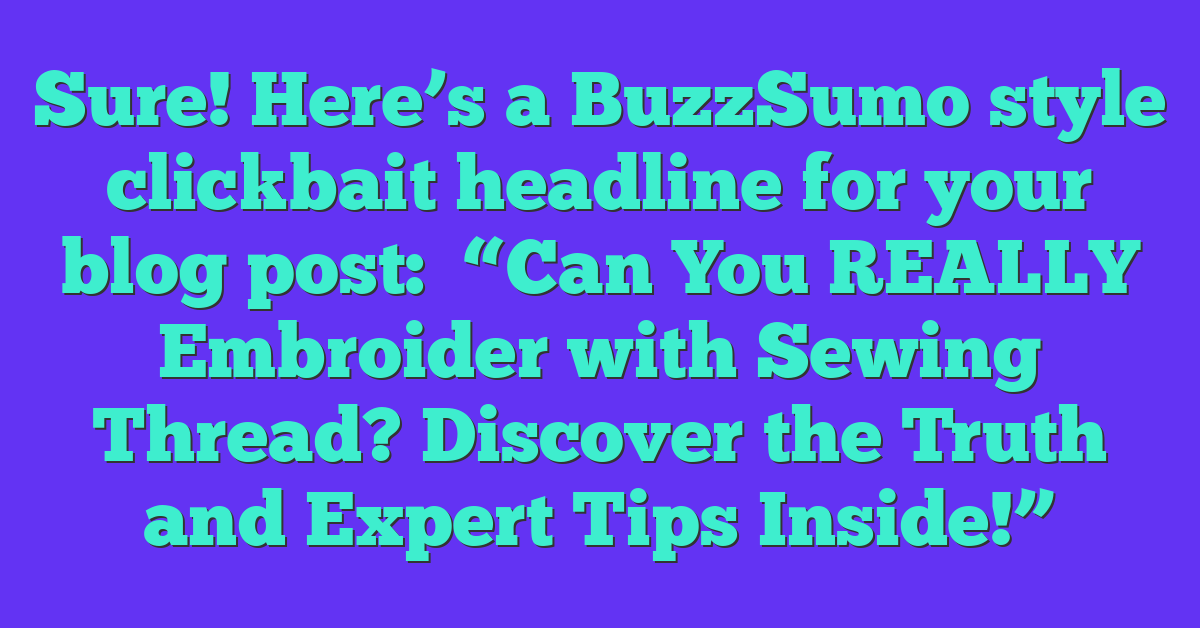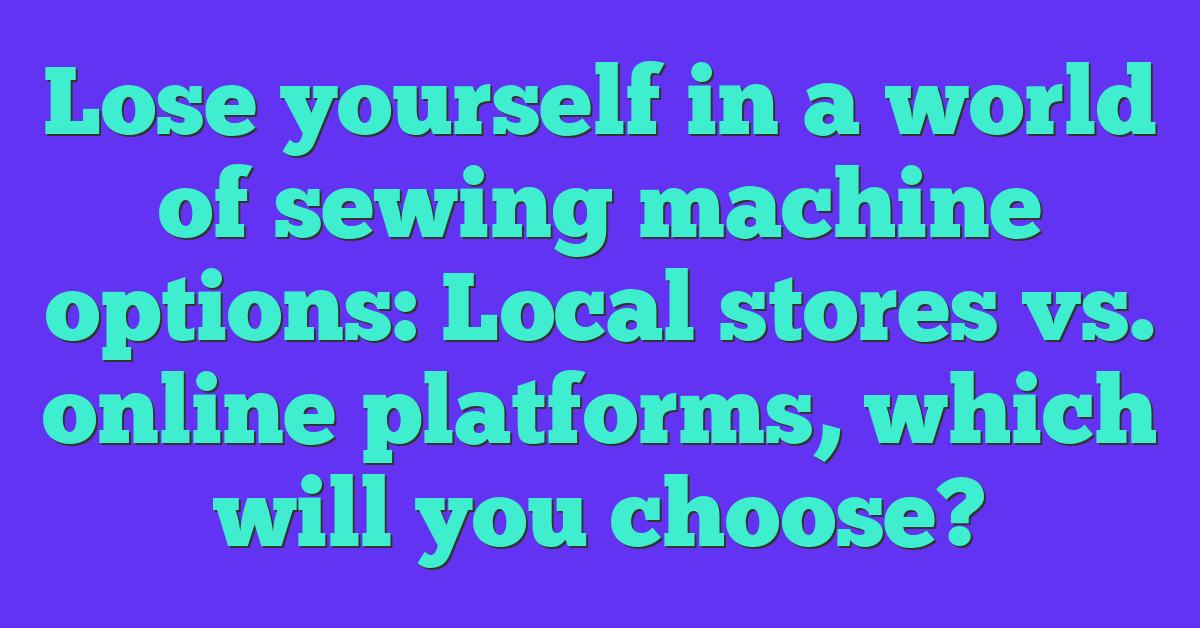Ever found yourself staring at your sewing kit, wondering if you can use that regular sewing thread for embroidery? You’re not alone. Many crafters ponder this very question, especially when they’re itching to start a new project but don’t have specialized embroidery floss on hand.
The good news is, you can absolutely use sewing thread for embroidery! While it might not be the traditional choice, it’s versatile and can produce beautiful results. Let’s dive into how you can make the most of what you already have and explore some tips to ensure your embroidered creations turn out stunning.
Exploring the Possibility: Can You Embroider With Sewing Thread?
You can definitely embroider with sewing thread. It offers flexibility and a broad color range, but there are key differences between sewing thread and traditional embroidery floss. Understanding these differences helps create beautiful embroidery.
Differences Between Sewing Thread and Embroidery Floss
Thread Composition: Sewing thread is usually made from polyester or cotton, while embroidery floss is typically six strands of mercerized cotton. The texture differs, impacting the final look.
Thickness: Sewing thread is thinner than embroidery floss, affecting coverage. You might need to double or triple the thread to mimic the look of floss.
Finish: Sewing thread often has a tighter twist, creating a smoother, shinier finish compared to embroidery floss. This can add a unique texture to your designs.
Tips for Using Sewing Thread in Embroidery
Choose High-Quality Thread: Opt for high-quality sewing thread to ensure it doesn’t break or fray easily during your embroidery work.
Double or Triple Thread: Use multiple strands of sewing thread to increase thickness. This will give your designs better coverage and a more pronounced appearance.
Use Smaller Needles: Select a smaller needle to accommodate the thinner sewing thread. Needle sizes like 9 or 10 work best for this purpose.
Experiment with Stitches: Try using different stitches to see which ones work best with sewing thread. Some stitches, like backstitch or satin stitch, adapt better to the thinner thread.
Mind the Tension: Be mindful of tension to prevent puckering. Sewing thread can be more prone to tightening, so adjust accordingly to maintain smooth, even stitches.
Embroidery Projects with Sewing Thread
Using sewing thread in embroidery projects can yield unique results. Consider these project ideas:
- Monogrammed Towels: Add initials to towels with sewing thread for a sleek, refined look.
- Small Detail Work: Use sewing thread for intricate details within larger designs, such as facial features in portraits.
- Clothing Embellishments: Create delicate trims or patterns on clothing, providing a subtle yet elegant touch.
Exploring embroidery with sewing thread opens up new creative possibilities. With the right approach and techniques, you can achieve remarkable results that stand out.
Comparing Sewing Thread and Embroidery Floss
Sewing thread and embroidery floss serve distinct purposes in needlework. Understanding their differences enhances your project outcomes.

Texture and Thickness Differences
Sewing thread is usually finer and smoother than embroidery floss. Manufacturers produce sewing threads in a single-ply structure, which makes them ideal for precise stitches. Embroidery floss consists of six strands twisted together, giving it a thicker, more textured feel. While floss allows you to adjust strand count for varied thickness, sewing thread generally requires doubling or tripling strands to match embroidery floss thickness.
Color and Finish Variations
Color options vary between sewing thread and embroidery floss. Embroidery floss comes in a wide range of vibrant colors and often features a glossy finish. This shiny appearance adds a special touch to embroidery works. In contrast, sewing thread, which also offers numerous colors, typically has a matte finish. Selecting the right thread or floss can significantly affect the final look of your project based on color intensity and finish effect.
Techniques for Embroidering With Sewing Thread
Embroidering with sewing thread offers unique opportunities to add fine detail to your projects. Although sewing thread differs from traditional embroidery floss, it enables intricate and subtle design work.
Adjusting Tension and Stitches
Maintaining proper tension and selecting appropriate stitches are crucial when embroidering with sewing thread. Light and consistent tension prevents the thread from breaking or the fabric from puckering.
Tension: Soft and even tension keeps stitches smooth. If the thread breaks, loosen the tension slightly until it stops happening. For tight stitches, adjust the tension until they lie flat without distortion.
« Unlock Your Creativity: Master Sewing Without a Pattern with These Expert Tips
Discover the Perfect Sewing Machine Needle Size for Flawless Quilting Results »
Stitches: Simple stitches like backstitch and running stitch work well with sewing thread. Use these stitches for finer details and smaller areas. To add thickness, double or triple the thread or experiment with compound stitches.
Choosing the Right Needle and Fabric
Selecting the right needle and fabric plays a significant role in achieving desired results with sewing thread. Thinner fabrics and needles ensure ease of stitching and prevent damage.
Needle: Use a fine needle, such as a crewel or embroidery needle. These needles have a larger eye, accommodating multiple strands of thin sewing thread and reducing stress on the fabric.
Fabric: Opt for tightly woven fabrics like cotton or linen. These materials withstand the finer tension and pressure applied during embroidery with sewing thread, maintaining their structural integrity.
By adjusting tension and stitches and selecting the right needle and fabric, you can achieve beautiful embroidery with sewing thread, getting the most out of every project.
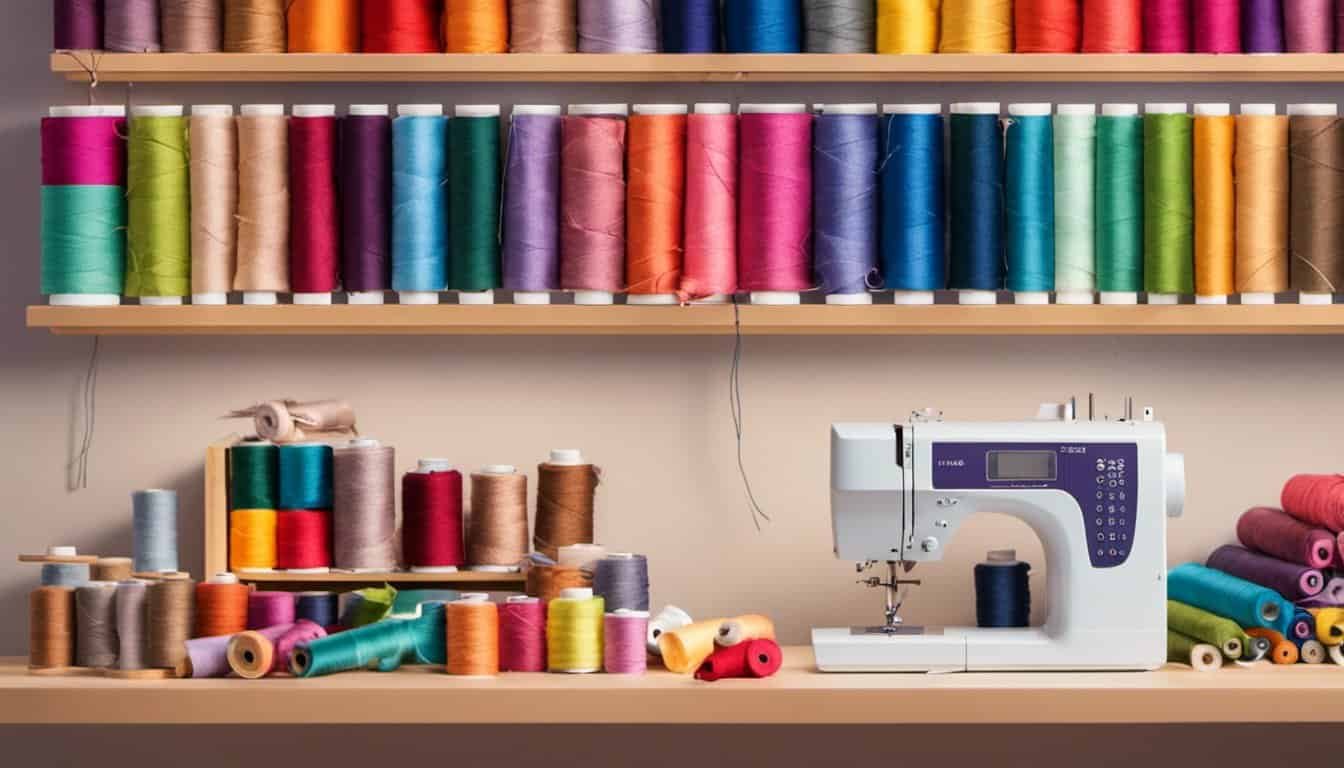
Examples of Projects Using Sewing Thread for Embroidery
Sewing thread can serve as a versatile tool for various embroidery projects. Here are some ideas to get you started.
Simple Monograms and Designs
Monograms and simple designs stand out with sewing thread. Use a backstitch or running stitch for clean, precise lines. Choose a contrasting thread color to make initials or basic shapes pop against the fabric. For example, you can personalize handkerchiefs, towels, or even pillowcases with your embroidery.
Detailed Floral Patterns
Floral patterns can become intricate works of art with sewing thread. Use multiple strands for varying thickness and texture. A combination of split stitches, French knots, and satin stitches adds depth to flowers and leaves. Embroidered flowers on clothing, bags, or home decor items like table runners can bring a touch of elegance to everyday objects.
Pros and Cons of Using Sewing Thread for Embroidery
Experimenting with different threads can enhance your embroidery projects. Explore the benefits and drawbacks of using sewing thread for embroidery.
Advantages of Choosing Sewing Thread
Find sewing thread available in a wider range of colors and finishes compared to embroidery floss. This diversity allows you to match or complement fabrics more precisely, resulting in more cohesive projects.
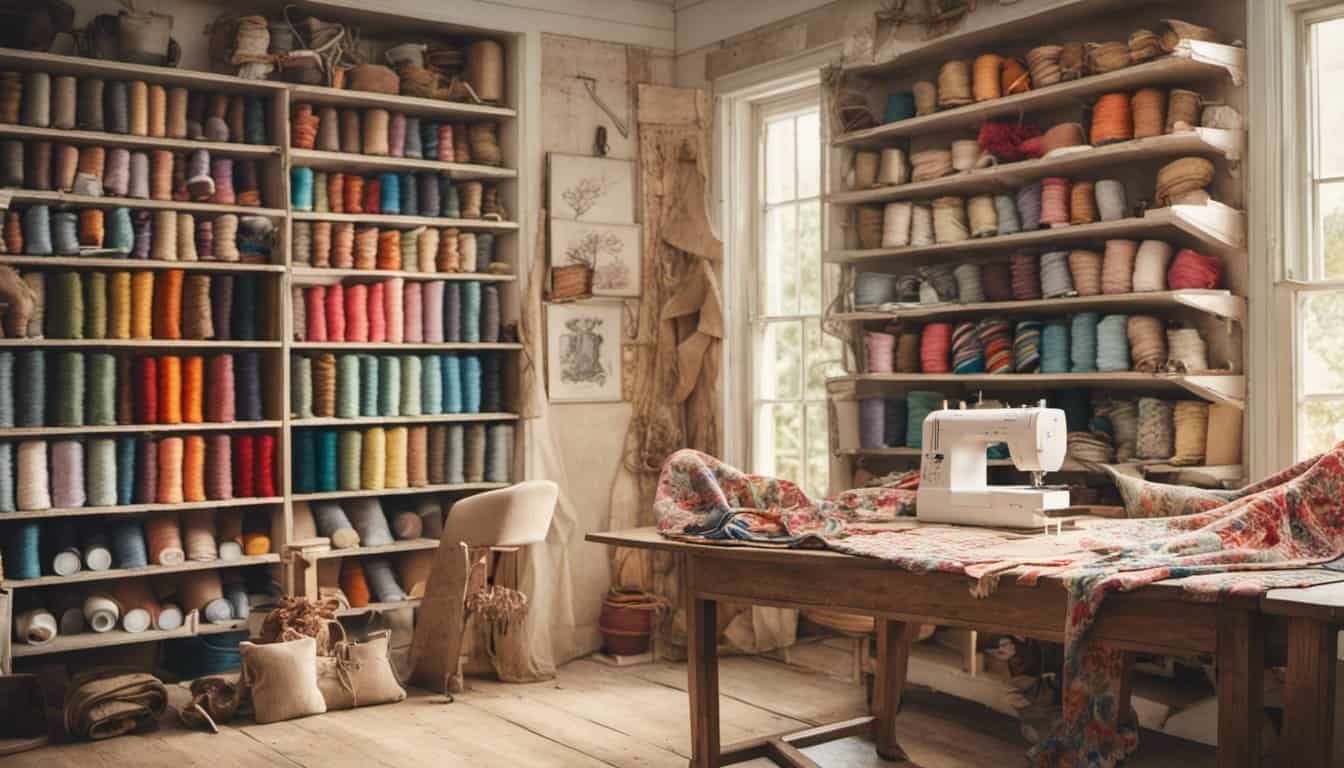
Enjoy the accessibility of sewing thread, which is easier to find in most craft stores. This convenience makes it simple to start your projects without searching extensively for the right thread.
Appreciate the cost-effectiveness of sewing thread, which often comes at a lower price than embroidery floss. This makes it an ideal choice for large projects or if you’re working on a budget.
Sewing thread tends to be stronger and more durable, making it a great option for projects requiring extra toughness, like items subjected to frequent use or washing.
Challenges and Limitations
Recognize that sewing thread is finer than embroidery floss, which can impact the visibility and texture of your stitches. To achieve desired effects, double or triple the thread.
Manage tension carefully, as using the wrong tension can cause fabrics to pucker. Experiment with test swatches to determine optimal tension settings for your project.
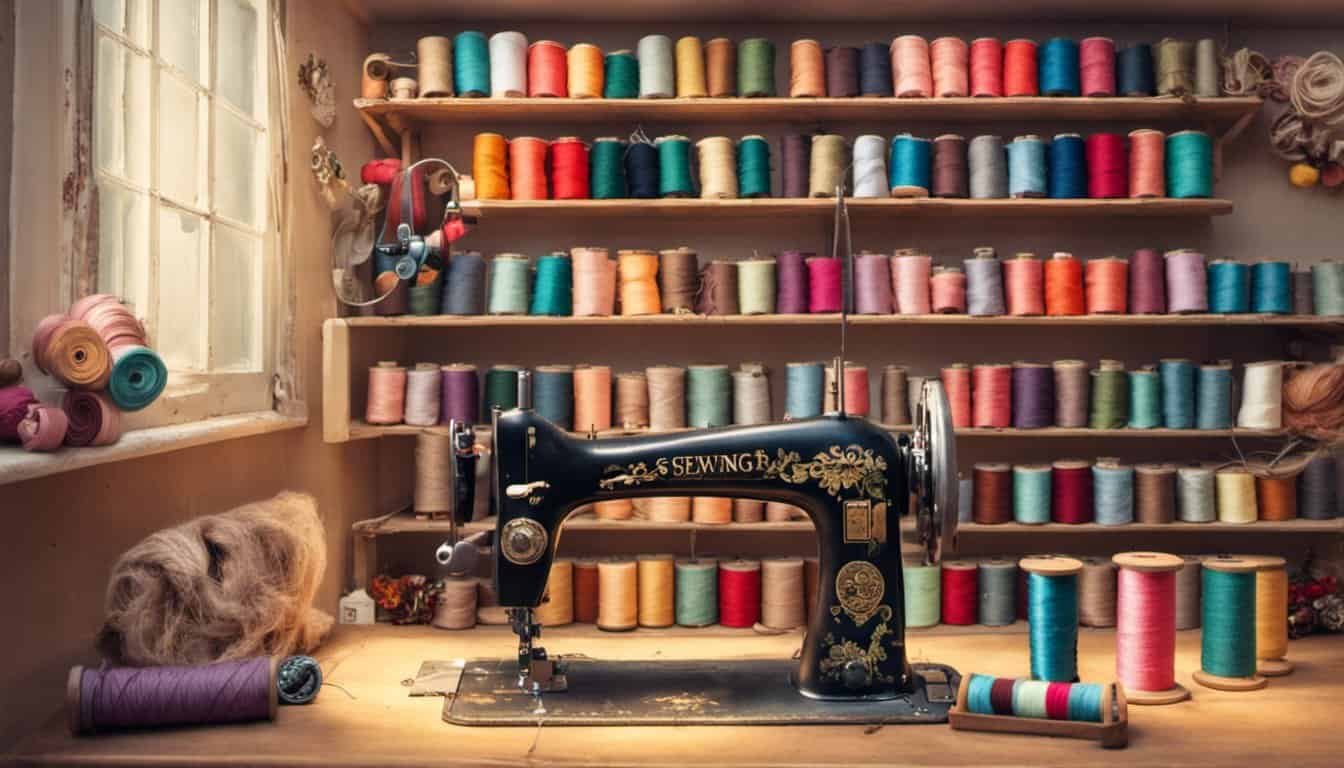
Be aware of potential limitations in coverage. Finer thread may require more stitches to cover the same area as embroidery floss, potentially increasing the time investment for more extensive designs.
Finally, account for the finish of sewing thread, which may differ from the sheen of embroidery floss. This difference can affect the overall aesthetic of your project if not considered beforehand.
Understanding these pros and cons can help you decide whether sewing thread suits your embroidery needs.
Conclusion
Choosing between sewing thread and embroidery floss depends on your project’s needs and personal preferences. Sewing thread offers a wider color range and is more accessible and cost-effective, making it a great option for many. However, you need to manage challenges like thread fineness and tension to achieve the desired results.
Experimenting with different stitches and high-quality threads can help you master the art of using sewing thread for embroidery. With a bit of practice, you can create unique and beautiful pieces that showcase your creativity and skill. Happy stitching!


